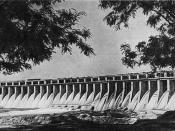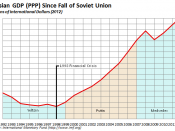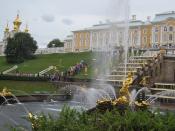Explain how Russia and the Soviet Union modernised from the Bolshevik Revolution in 1917 until 1941.
In 1917, as the political system of Russia was in turmoil, four years of war severely destabilised the Russian economy. Disruptions within the economy occurred due to the men on the battlefield, the loans the Russian government were taking to fund the war and the new policies introduced by the Provisional Government. In 1916 (figures not available for 1917), the production of iron, steel and coal had barely increased since 1913. The production of iron declined within three years from 4.2 million tons to 3.8 million tons. As Lenin assumed power, the civil war continued the trend of economic decline as the economic policy of war communism was introduced. The Bolsheviks had to feed the towns, who were providing munitions for the socialist war effort hence grain requisitioning of the peasantry occurred. In the urban towns, The Supreme Council of the National Economy (Vesenkha) was introduced as a measure against the birth pangs of a new socialist world.
By 1921, the effects of the civil war took its toll as production fell to considerably low levels. Iron production fell to 0.1 million tonnes, steel production fell to 0.2 million tonnes and coal production fell to 9.5 million tonnes. The production levels mirrored that of RussiaÃÂs industrial capacity in the 1880ÃÂs.
The issue of modernisation in the Soviet economy was widely debated by two different socialist thoughts due to the declining economy of the Soviet Union. The ÃÂBukhariniteÃÂ strategy from the right was based on maintaining the smychka or the alliance between the peasantry and the proletariat. Bukharin believed that the peasantry should be allowed to proper flourish through an internal compromise with capitalism. The strategy also entailed a foreign policy based on a peaceful...



Soviet History
Although this essay contains a good deal of information, it is not clear in the presentation. There is a good deal of information stuffed in quickly without first establishing any context or interrelationship, so that the overall product is very hard to follow.
1 out of 2 people found this comment useful.